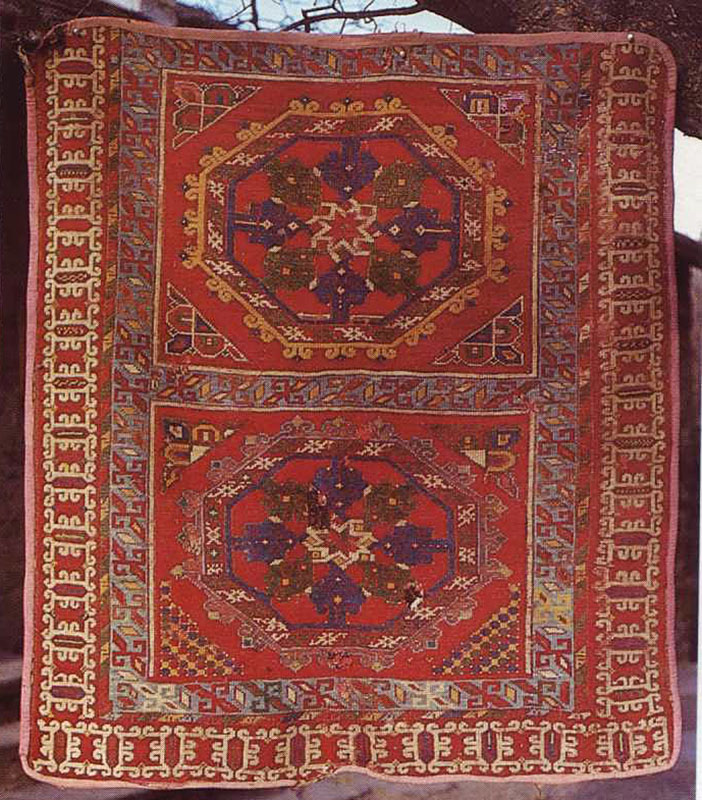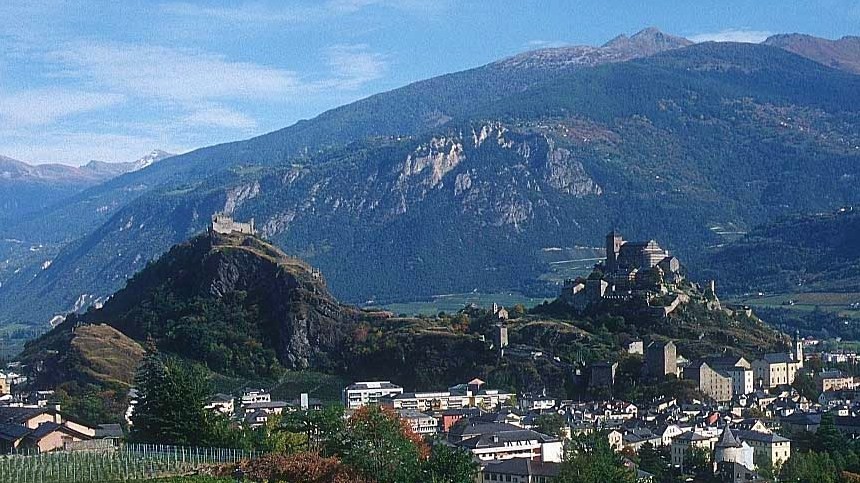|
Large pattern
Holbein carpet, 2nd half 15th century, Turkey. 118 x 132cm. Cathedral of
St. Catherine, Sion (Sitten),
Canton Valais, Switzerland.
|
|
Large Octagon Rug, West Anatolia, second half of the 15th century,
1.18 X 1.32m (3' 10" x 4'4").
During the late 15th century one of the most popular Oriental carpet
designs was a composition of rows of large octagonal medallions ivith
hooks on the outside and wheel-like spokes internally. While ive believe
that the designs originated in Anatolia, examples from Spain are atso
known, in rug literature this central octagonal medallion pattern is
usually called 'Large Pattern Holbein'.
In this example the
medallion is particularly clearly drawn. The centre with its white
interlace star is comparable to one of two examples in the Museum fur
Islamische Kunst in West Berlin.u It is clear from the comer pieces and
the design of the border that this mg originally had three octagons.
A very similar border may be seen on a rug from the second half of the
15th century that has a small repeating design in the field.
A
simplified version of the border also appears on another octagon rug of
this type in the Textile Museum, Washington D.C., and again in a Swiss
needlework rug made in 1533 to commemorate the marriage of the Stokar and
Tschachllan families of Schajfhausen.
The corner pieces at the
lower end of the rug are similar to a three medallion Anatolian carpet in
Philadelphia,' and to several late 15th century Spanish versions of the
design. The design appears to have been so popular that it was even
reproduced in England.
Two of the best known paintings depicting
rugs with this pattern are in the National Gallery in London: one painted
around 1500 by the Master of St. Giles, and the other from the first half
of the 16th century by Hans Holbein the Younger.
|


